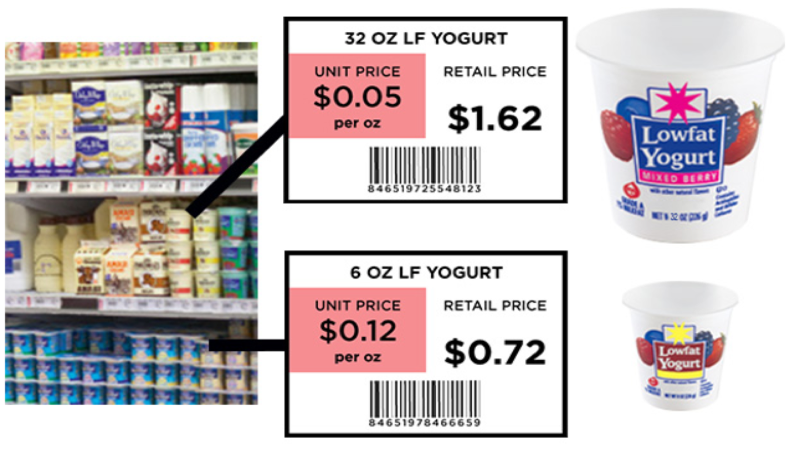The South Plains Food Bank work goes beyond delivering food to multiple agencies. The Nutrition Education team works hard to educate individuals about how to eat healthy on a budget. In our “10 Tips” series class, we discuss tips and tricks to preparing a healthful meal without breaking the bank.
- PLAN!!
- Before heading to the grocery store, plan your meals for the week. Make a menu filled with meals like stews, casseroles or stir-fries.
- Check to see what food you already have and make a list of what you need to buy.
- Get the best price.
- Check the local newspaper, online, apps for sales and coupons.
- Ask about rewards programs for extra savings at stores you shop frequently.
- Look for sales on meat which are often the priciest items on the shopping list.
- Compare, compare, compare!
- Locate the “Unit Price” on the shelf directly below the product. Use it to compare different brands and different sizes of the same brand.
- The image below shows two different price tags. In the first one, the retail price is $1.62 for one 32 oz. yogurt. The unit price, in the red box, is $0.05 per oz. In the second one, the retail price is $0.72 for one 6 oz. yogurt, but the unit price is $0.12 per oz. Based on the unit price, you can determine that the larger, 32 oz. yogurt is the better buy because you are getting more for your money. Click here to better understand the price tag

- Buy in bulk.
- Examples: Family packs of chicken, steak or fish, larger bags of potatoes and frozen vegetables.
- Buy in season.
- Buying fruits and veggies in season can lower the cost and add to the freshness.
- The USDA has a wonderful resource called the Seasonal Produce Guide.
- Make items from scratch.
- Foods like pre-cut veggies, instant rice, oatmeal or grits will cost more than if you were to make them from scratch.
- Cook once and eat all week.
- Prepare a big batch of your family’s favorite recipe on a day off. Freeze the leftovers in separate containers. Use them throughout the week when you think about ordering take-out.
- Get creative!
- Use your leftovers in a different way. A delicious example is throwing leftover chicken in a stir fry or over a leafy salad.
References:
10 Tips Eating Better on a Budget
ChooseMyPlate.gov
USDA.gov

